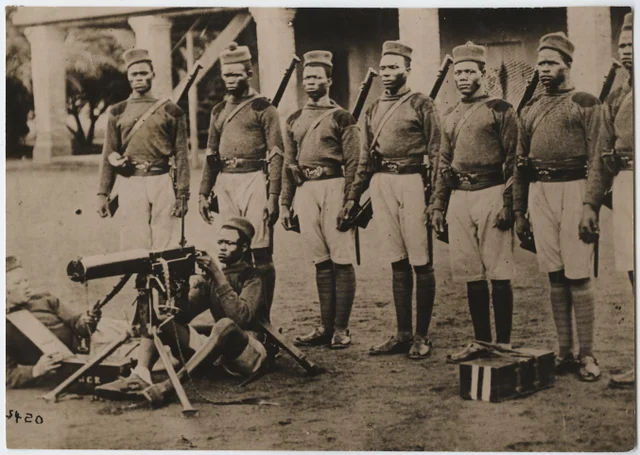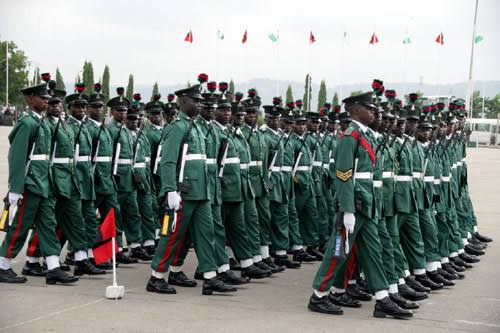With 100,000 professional men, the Nigerian Army is the largest component of the Nigerian Armed Forces. In Nigeria, the first units of the Royal West African Frontier Force (RWAFF) were constituted in 1900.
According to history, the Nigerian army has its roots in three military groups from the nineteenth century, of which the earliest dates from Captain John Glover’s formation of a small Hausa militia (named Glover’s Hausas) to defend the British colony of Lagos in 1862.
Nigerian troops trained in the United Kingdom served with the 1st Infantry Brigade in West Africa and the 81st and 82nd divisions in the East African Campaign, which was in the Far East during World War II.

By the end of the Nigerian Civil War in 1967, the force had grown from 18,000 infantry battalions and supporting units to roughly 126,000 in three divisions. Furthermore, the task of the Federal Nigerian army did not change significantly in terms of doctrine: it continued to deal with and defeat an organized opponent.
The Nigerian Army’s expansion resulted in a significant drop in the quality of soldiers recruited into the force. Moreso, with freshly formed lieutenant colonels commanding brigades including platoons and companies generally commanded by sergeants and warrant officers, Nigeria’s expansion process resulted in a severe scarcity of commissioned officers.
Therefore, as a result of this change, there was shaky command as well as control and rudimentary staff work. Furthermore, poor leadership was a factor that enhanced the Federals’ three divisions to battle separately and competes for soldiers and supplies. As a result, there was an increased number of inexperienced, poorly trained, and ineptly led soldiers. These soldiers demonstrated their lack of professionalism and indiscipline- they murdered innocent civilians as a result of their failure to properly execute infantry tactics.
Also, history has it that at the time, individual personalities have a bigger effect on the armies of developing countries, which have weaker institutional structures. on e of such influence was Colonel Olusegun Obasanjo who was one of the key politicians involved in Nigeria. Obasanjo is notable for his efforts during the civil war to reorganize his command which was 3 Division, to enhance logistics and administration. The reorganization he instituted allowed the Division to carry out the offensive that brought the civil war to an end.
During the Nigerian Civil War, 1 Area Command at Kaduna was renamed 1 Infantry Division, 2 Division was formed under Colonel Murtala Mohammed, and the former Lagos Garrison Organisation was renamed 3 Infantry Division, subsequently to be renamed 3 Marine Commando under Colonel Benjamin Adekunle.

Nigerian Army during Gowon’s administration
To deemphasize the prior regional structure, the army’s three divisions were reorganized into four divisions at the end of the Civil War, each overseeing regions extending from north to south. As a result, each division had access to the sea, facilitating triservice collaboration and logistic assistance. This formula was eventually abandoned in favor of the current division-by-sector assignment.
The Nigerian Army was severely under-resourced during the civil war; Obasanjo’s memoirs detail the lack of extra equipment for mobilization and the “haphazard and unreliable system of procurement and provisioning” that continued throughout the conflict. Several Western countries placed arms embargoes on Libya, making the situation much more difficult.
To date, it is recorded that the failure of the Nigerian Army during and after the civil war is a result of its involvement in politics, as well as its expansion and change in structure promoted by the civilian government.

